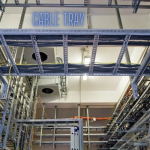How to finalize the EV Charging Strategy for your Building or Apartment?
The rise of EVs creates difficulty for existing apartments or buildings to handle this increased electricity demand. It can be easy to set up electrical infrastructure for EV chargers for the first few EV owners but providing power to charge all complete building EV’s can be difficult.
EV charging is an essential service for EV owners. The required electricity demand will rise along with the percentage of residents using EVs, which is expected to range from 5% to 20% to 100%. Futureproofing is crucial for such a crucial investment, and there are a few issues that need to be resolved:
- How to distribute electricity to best handle rising demand?
- Should you invest in full-scale charging or gradually expand your system?
- How to make sure the system compatibility with emerging technologies?
To establish a plan for the long-term charging infrastructure that provides solutions to these questions, a thorough examination of the building’s conditions and careful planning is necessary.
Report on a Feasibility Study
To establish a straightforward procedure to facilitate the transition to EV charging and offer a feasibility study report, iEngineering will collaborate closely with numerous building owners or lot owners.
To create a long-term plan for the rollout of infrastructure to fulfill the demand for EV charging at your building or lot, this report will assist building owners or EV owners in understanding the available EV charging alternatives and indicative costings.
Building or lot surveys will be carried out by us, then compile and examine the survey’s results. This information will be the base for a report that may be used to guide a building committee.
Options For EV Charging
All the EV charging options that are accessible for your facility will be presented by iEngineering. These choices fall into 5 groups:
- Smart charger
- Common AC charger
- Common DC charger
- Separate AC Chargers for each EV owner by utilizing the current infrastructure
- Separate AC Chargers for each EV owner by installing new infrastructure
1. Smart charger
- We provide IP65-rated AC chargers that range from 7 to 22 kW and can be used indoors and outdoors.
- The output power range of an AC charger is 6A to 32A.
- Dynamic load balancing (DLB), which is available in our AC charger for home usage, can maintain the dynamic balance of the whole household load and ensure safety to prevent home appliances from overloading, while the EV charger is working with other household appliances.
- A smart APP that connects through Bluetooth or WIFI may control the AC charger. We can schedule charging, see historical charging records, establish monthly maximums, and view charging data and status with this app firmware update.
- OCPP 1.6j is the charging protocol
2. A Common AC Charger
- The simplest option for committees wishing to provide EV charging is a shared AC charger.
- The Committee provides funding for the installation and keeps the shared charger in the visitor’s parking lot.
- EV owners pay for electricity use managed by online billing software.
- The method is suitable for the short time as the increase in the number of EVs will create challenges in the management and logistics of sharing chargers.
- Charge rates range from 7 to 22 kW, and full charges take between 4 and 8 hours to complete.
3. A Common DC Charger
- The Committee provides funding for the installation and keeps the shared charger in the visitor’s parking lot.
- EV owners pay for electricity use that is monitored by billing software.
- Expect better longevity of solution, but challenges with sharing and administration of chargers persist.
- The charge speed is 24kW.
- Charge time is 1 hour for topping off and 2-4 hours for a full charge.
4. Separate AC Chargers for each EV owner by utilizing the current infrastructure
- The committee will pay for all common infrastructure, including Data Racks, Energy Management Systems, Cable Trays, and DB for EVs.
- EV owners will pay for the connection of their own private EV chargers and cabling to the common infrastructure.
- The committee will need to make a good amount of investment.
- The result will be equivalent for EV owners because everyone will have access to private charging.
5. Separate AC Chargers for each EV owner by installing new infrastructure
-
- An improvement to the electrical infrastructure, involving L3 design and L1 construction.
- Long lead time
- Significant investment necessary
- The building will receive enough power
- Future-proof solution
For choosing an EV charging option, the report will include comprehensive information for each alternative.
We will develop an EV charging strategy for the rollout of EVs in your building for the next 20 years based on the findings of these investigations. A report with the following information will be released by us:
- Obtain electrical interval data from your energy retailer for a quantitative analysis of power usage.
- Collection and review of your building’s or lot’s electrical drawings.
- Perform a preliminary site assessment for the inspection of electrical infrastructure.
Each choice in the report will provide enough information to select an EV charging strategy for your building.




